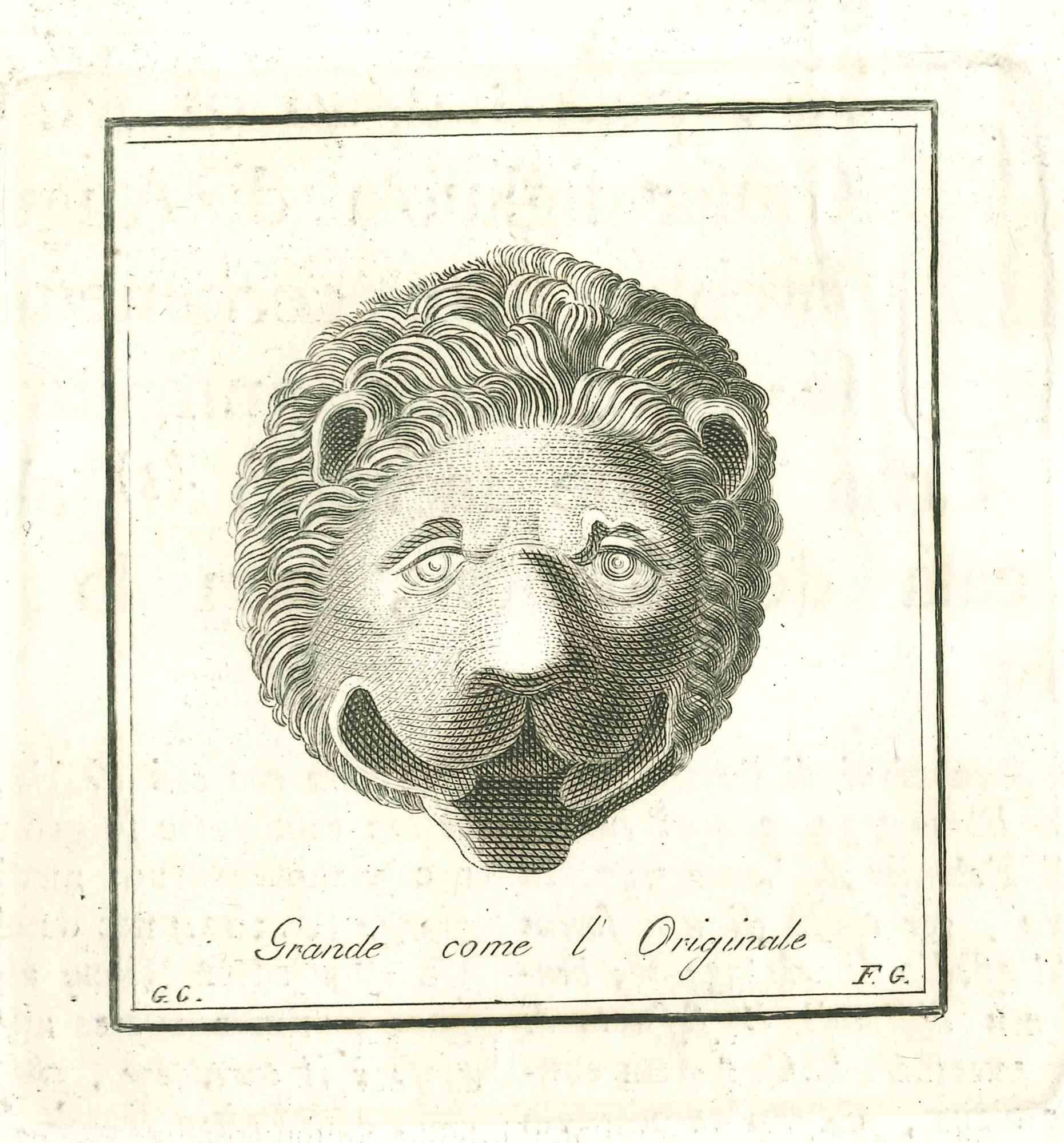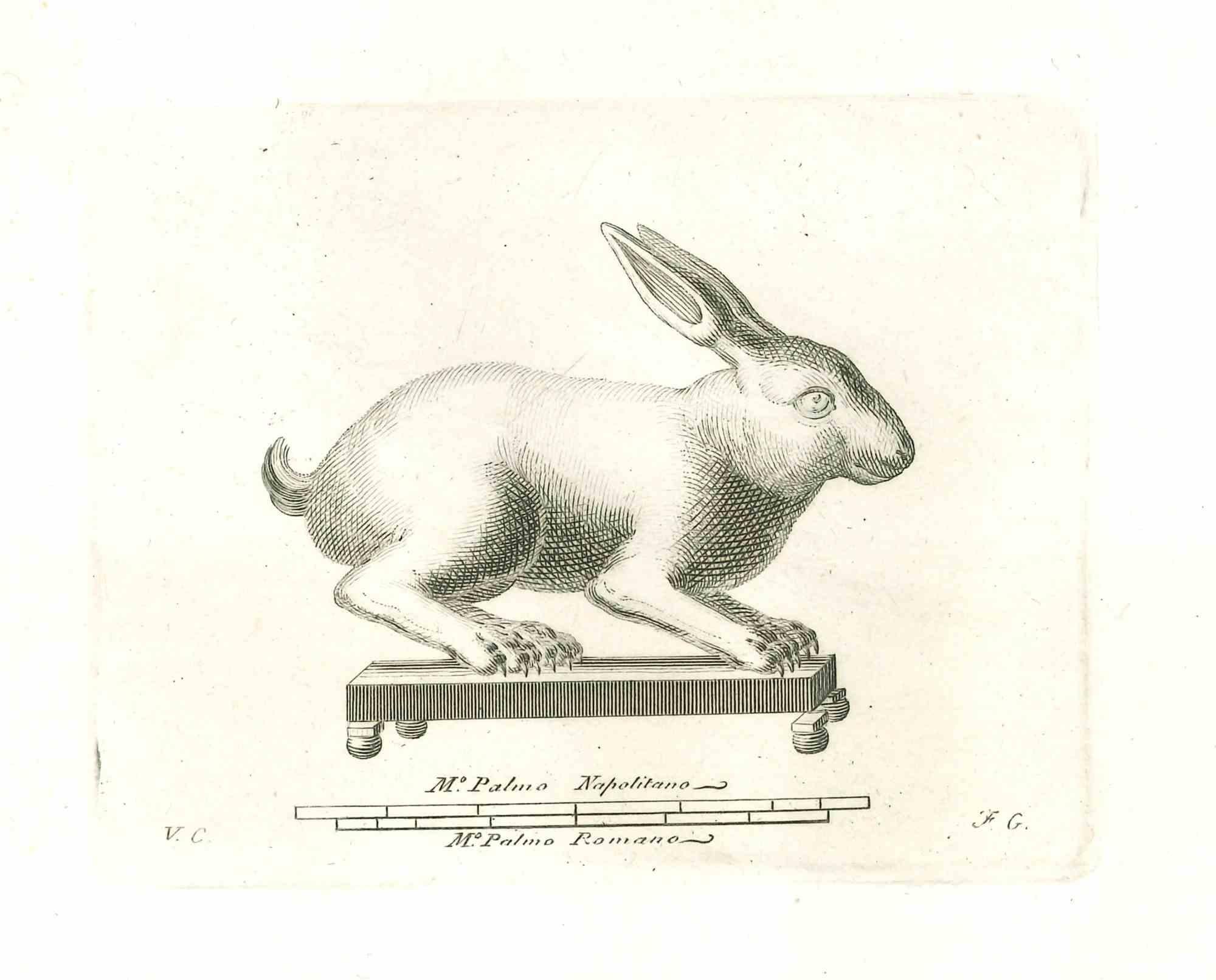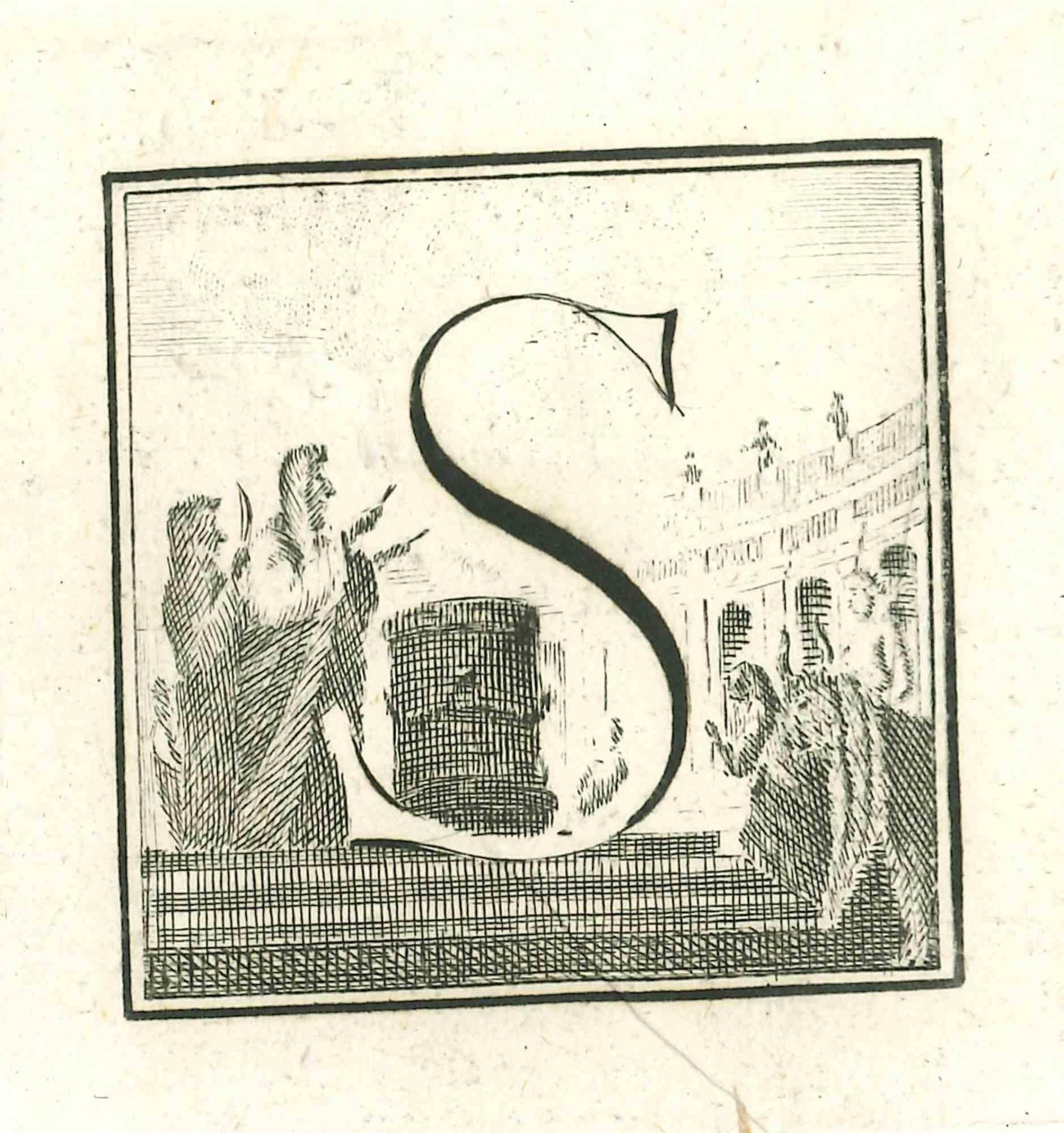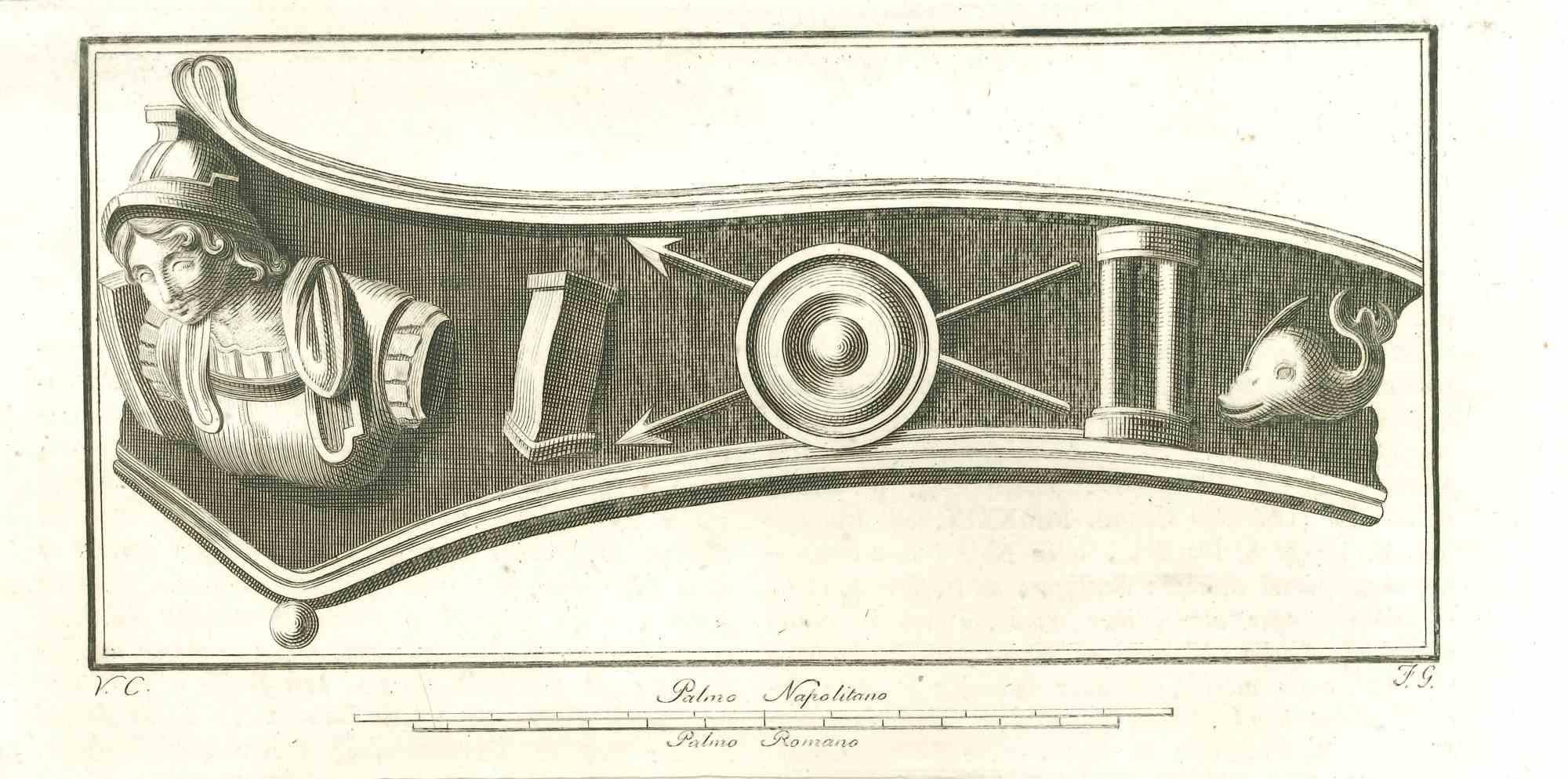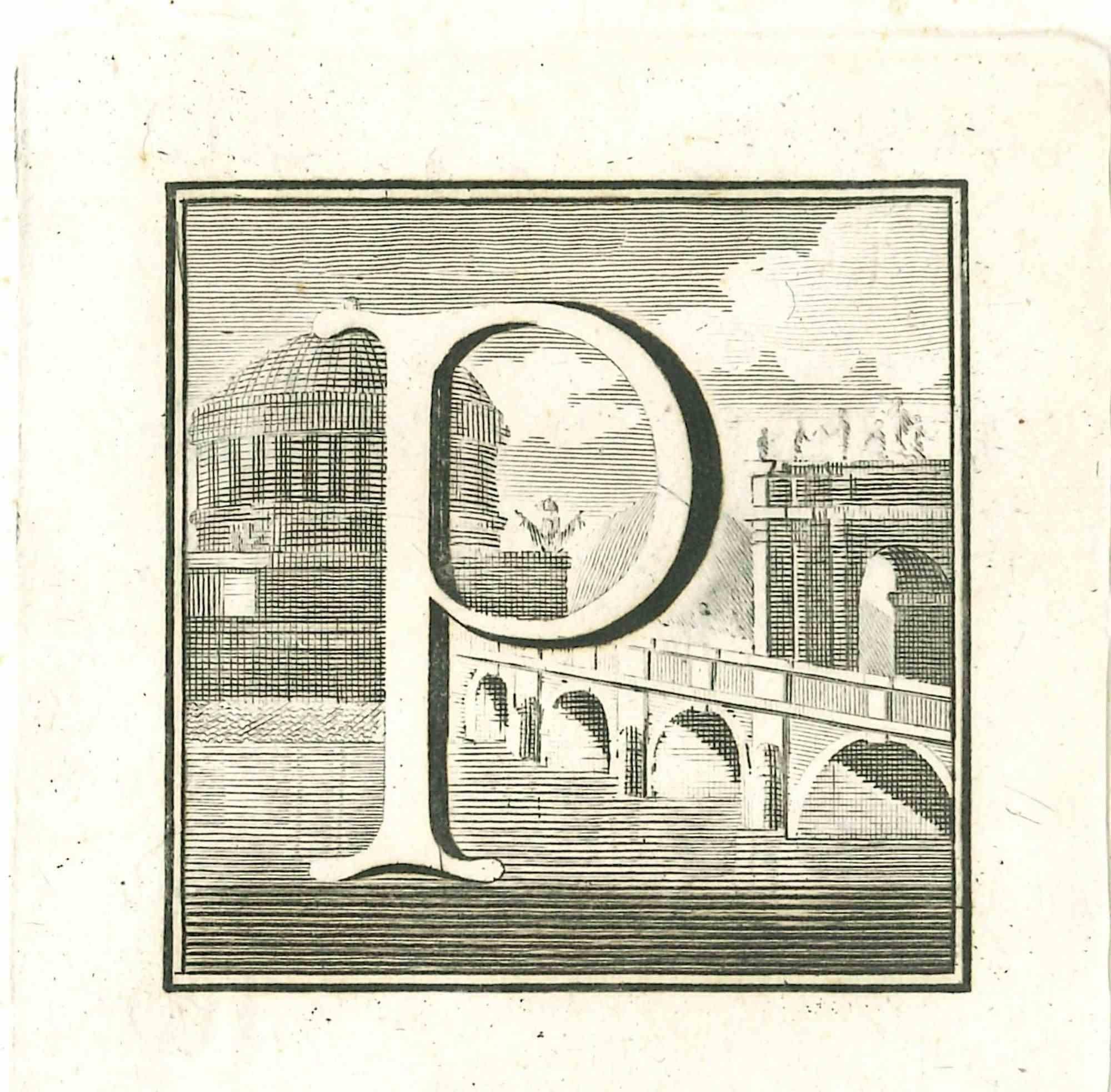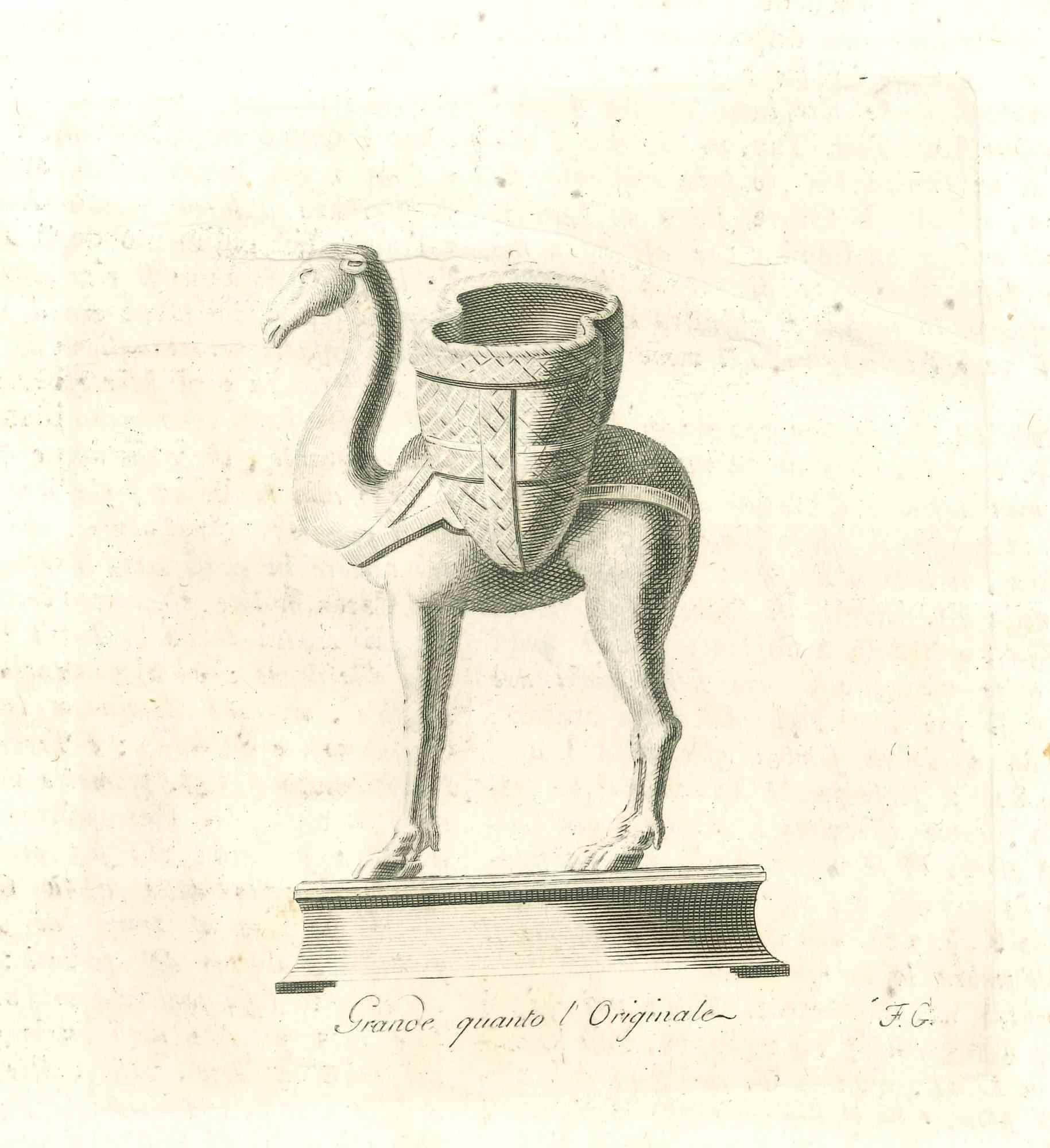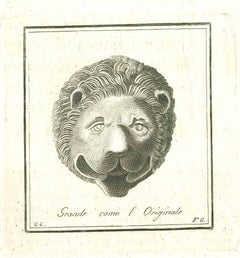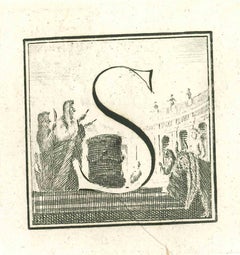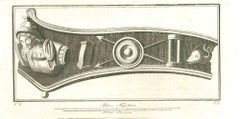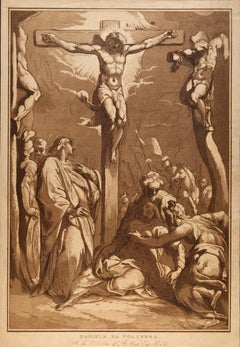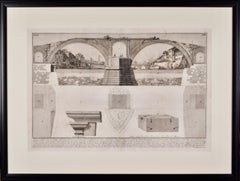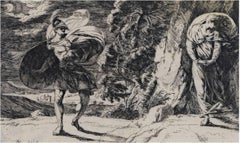Artículos similares a Capital Letter L for the Antiquities of Herculaneum Exposed-Etching-18th Century
¿Quieres más imágenes o vídeos?
Solicita imágenes o vídeos adicionales al vendedor
1 de 2
UnknownCapital Letter L for the Antiquities of Herculaneum Exposed-Etching-18th CenturyLate 18th Century
Late 18th Century
Acerca del artículo
Capital letter L for the Antiquities of Herculaneum Exposed, original etching from the end of the 18th century, made by Various Old Masters.
In very good condition, except for some stains along the margins.
The etching belongs to the print-series Antichità di Ercolano Esposte (original title: Le Antichità di Ercolano Esposte), eight volumes of engravings of the finds from the excavation of the ruins of Herculaneum in the Kingdom of Naples (today Campania, Italy).
It was published between 1757 and 1792 by the Regia Stamperia and later these copies were delivered to selected recipients throughout Europe.
Despite the title, the Antiquity of Herculaneum shows objects from all the excavations undertaken by the Bourbons in the Gulf of Naples. These include Pompeii, Stabia and two sites of Herculaneum: Resina and Portici.
The Bourbon king Charles commissioned fifteen scholars to create a new “Herculaneum Academy” to study the finds and publish the results of the archaeological excavations of the sites.
The engravings are of high quality and the accompanying text shows a large scholarship.
They were made by 25 leading artists involved by the King to prepare drawings and engravings on the finds, among which we find Giovanni Elia Morghen, Carlo Nolli, Luigi Vanvitelli and Giovanni Battista Casanova.
The "Antiquity" was designed more to amaze readers with the quality of the objects in the collection of the King of Naples than to be used in research, following and increasing the interest of eighteenth-century society for classical culture and art in particular.
Through the exaltation of the classical concept of proportion and harmony, the book inspired the neoclassical movement in Europe, giving artists and decorators access to a vast workshop of Hellenistic motifs.
Ref .:
National Gallery (Washington), Mark J. Millard Architectural, IV (2000), n. 1.
L. Garcia y Garcia, Nova bibliotheca Pompeiana (2 v., 1998).
Royal Institute of British Architects, British Architectural Library ... First Printed Books, 1 (1994), no. 112.
U. Pannuti, Engravers and designers of the Royal Printing House of Naples in the 18th century: the publication of the Antiquities of Herculaneum, in Xenia antiqua, 9 (2000), p. 151-178.
V. Trombetta, The edition of The Antiquities of Herculaneum exhibited in Rendiconti of the Academy of Archeology, Letters and Fine Arts of Naples, 59 (1984), p.151-172.
- Año de creación:Late 18th Century
- Dimensiones:Altura: 8 cm (3,15 in)Anchura: 8 cm (3,15 in)Profundidad: 2 mm (0,08 in)
- Medio:
- Movimiento y estilo:
- Época:
- Marco:Opciones de enmarcado disponibles
- Estado:Insurance may be requested by customers as additional service, contact us for more information.
- Ubicación de la galería:Roma, IT
- Número de referencia:Vendedor: T-1261241stDibs: LU65039313562
Sobre el vendedor
4,9
Vendedor Platino
Vendedores premium con una calificación de +4,7 y tiempos de respuesta de 24 horas
Vendedor de 1stDibs desde 2017
7524 ventas en 1stDibs
Tiempo de respuesta usual: 1 hora
- EnvíoRecuperando presupuesto…Envío desde: Monaco, Mónaco
- Política de devolución
Partes de esta página se han traducido automáticamente. 1stDibs no puede garantizar la exactitud de las traducciones. El inglés es el idioma predeterminado de este sitio web.
Garantía de autenticidad
En el improbable caso de que haya algún problema con la autenticidad de un artículo, ponte en contacto con nosotros en un plazo de 1 año para recibir un reembolso total. DetallesGarantía de devolución de dinero
Si tu artículo no es como se describe, sufre daños durante el transporte o no llega, ponte en contacto con nosotros en un plazo de 7 días para recibir un reembolso total. DetallesCancelación dentro de las 24 horas
Tienes un período de gracia de 24 horas para reconsiderar tu compra, sin preguntas.Vendedores profesionales aprobados
Nuestros vendedores de primera clase deben cumplir estrictos estándares de servicio para mantener la integridad de nuestros anuncios.Garantía de igualación de precios
Si encuentras que un vendedor publicó el mismo artículo por un precio menor en otro lado, igualaremos ese precio.Entrega global de confianza
Nuestra red de transporte de primera ofrece opciones de envío especializado en todo el mundo, que incluye envío personalizado.Más de este vendedor
Ver todoAntiguo relieve romano - Grabado original - Siglo XVIII
Antiguo relieve romano, de la serie "Antigüedades de Herculano", es un aguafuerte original sobre papel realizado por un artista anónimo en el siglo XVIII.
Firmado en la placa, abajo ...
Categoría
finales del siglo XVIII, Antiguos maestros, Impresiones figurativas
Materiales
Grabado químico
Estatua romana antigua - Grabado original de Vincenzo Campana - Siglo XVIII
Por Vincenzo Campana
Antigua estatua romana, de la serie "Antigüedades de Herculano", es un grabado original sobre papel realizado por Vincenzo Campana en el siglo XVIII.
Firmado en la placa en la parte ...
Categoría
finales del siglo XVIII, Antiguos maestros, Impresiones figurativas
Materiales
Grabado químico
Letra mayúscula S - Las Antigüedades de Herculano Expuestas - Aguafuerte - Siglo XVIII
Letra mayúscula S de las Antigüedades de Herculano al descubierto, grabado original de finales del siglo XVIII, realizado por Varios Maestros Antiguos.
En muy buen estado, salvo alg...
Categoría
finales del siglo XVIII, Antiguos maestros, Impresiones figurativas
Materiales
Grabado químico
Antiguo relieve romano - Grabado original de Vincenzo Campana - Siglo XVIII
Por Vincenzo Campana
Antiguo relieve romano, de la serie "Antigüedades de Herculano", es un aguafuerte original sobre papel realizado por Vincenzo Campana en el siglo XVIII.
Firmado en la placa, abajo a...
Categoría
finales del siglo XVIII, Antiguos maestros, Impresiones figurativas
Materiales
Grabado químico
Letra P mayúscula de las Antigüedades de Herculano - Aguafuerte - Siglo XVIII
Letra mayúscula P de las Antigüedades de Herculano al descubierto, grabado original de finales del siglo XVIII, realizado por Varios Maestros Antiguos.
En muy buen estado, salvo alg...
Categoría
finales del siglo XVIII, Antiguos maestros, Impresiones figurativas
Materiales
Grabado químico
Estatua romana antigua - Grabado original - Siglo XVIII
Antigua estatua romana, de la serie "Antigüedades de Herculano", es un aguafuerte original sobre papel realizado por Artista Anónimo en el siglo XVIII.
Firmado en la placa, abajo a ...
Categoría
finales del siglo XVIII, Antiguos maestros, Impresiones figurativas
Materiales
Grabado químico
También te puede gustar
Crucifixión: Aguafuerte del siglo XVIII de Conrad Metz según Daniele da Volterra
"Crucifixión" es un aguafuerte y aguatinta, impreso en tinta marrón por Conrad M. Metz a partir de una pintura de Daniele da Volterra. Se publicó en Londres en 1789 en "Imitations Of...
Categoría
finales del siglo XVIII, Antiguos maestros, Impresiones figurativas
Materiales
Grabado químico, Acuatinta
Puente Fabricius (Ponte Cestio) : Aguafuerte arquitectónico Piranesi del siglo XVIII enmarcado
Por Giovanni Battista Piranesi
Este grabado enmarcado del siglo XVIII de Giovanni Battista Piranesi se titula "Dimostransi nella Tav. presente la Pianta, ed Elevazione del Ponte, oggi detto Quattro Capi egli è ant...
Categoría
Década de 1750, Antiguos maestros, Impresiones de paisajes
Materiales
Grabado químico
El agarrotado - Aguafuerte
La figura del agarrotado es una imagen con gran dramatismo, de una fuerza excepcional.
Fue una de las estampas más conocidas e influyentes de goya a través de sus cuatro ediciones
...
Categoría
Mediados del siglo XIX, Antiguos maestros, Impresiones figurativas
Materiales
Grabado químico
"Perseo y Andrómeda" figurativo blanco y negro escena mitológica figurativa
Por Alexander Runciman
"Perseo y Andrómeda" es un aguafuerte del artista escocés Alexander Runciman, firmado en plancha en la parte inferior izquierda. Representa a Perseo a la izquierda blandiendo su escu...
Categoría
Década de 1770, Antiguos maestros, Impresiones figurativas
Materiales
Grabado químico
Basílica de San Lorenzo en Roma: Un grabado de Piranesi del siglo XVIII enmarcado
Por Giovanni Battista Piranesi
Este gran grabado enmarcado del siglo XVIII de Giovanni Battista Piranesi titulado "Veduta della Basilica di S. Lorenzo fuor della mura" (Basílica de San Lorenzo extramuros), publica...
Categoría
Década de 1750, Antiguos maestros, Impresiones de paisajes
Materiales
Grabado químico
Arquitectura romana antigua: Grabado original enmarcado del siglo XVIII de G. Piranesi
Por Giovanni Battista Piranesi
"Veduta del Sepolcro della Famiglia Plauzia per la Strada Che Conduce da Roma a Tivoli vicino a Ponte Lugano" de "Le Antichità Romane" (Antigüedades Romanas), una de las obras más fa...
Categoría
principios del siglo XVIII, Antiguos maestros, Impresiones figurativas
Materiales
Grabado químico, Grabado, Punta seca
